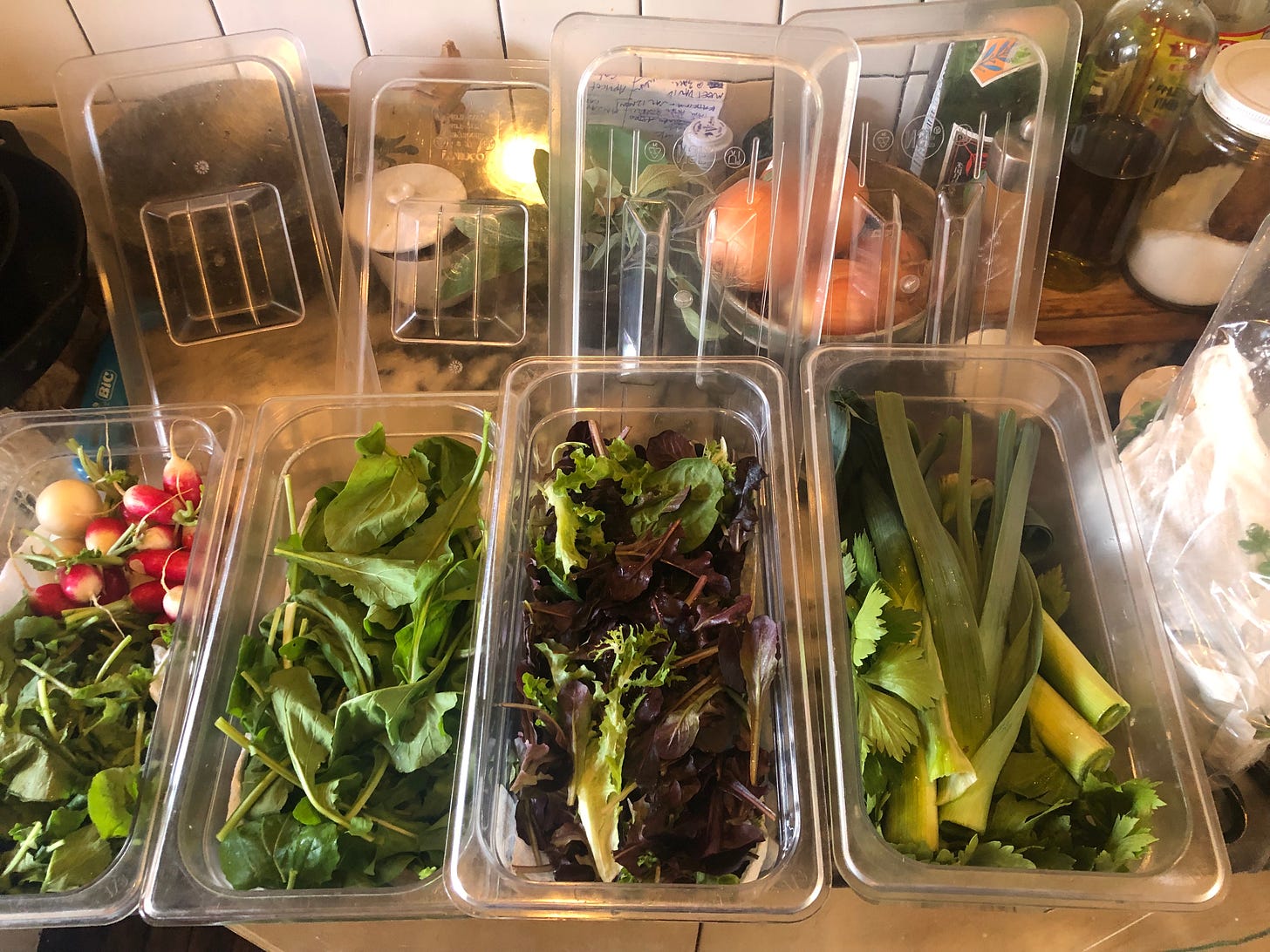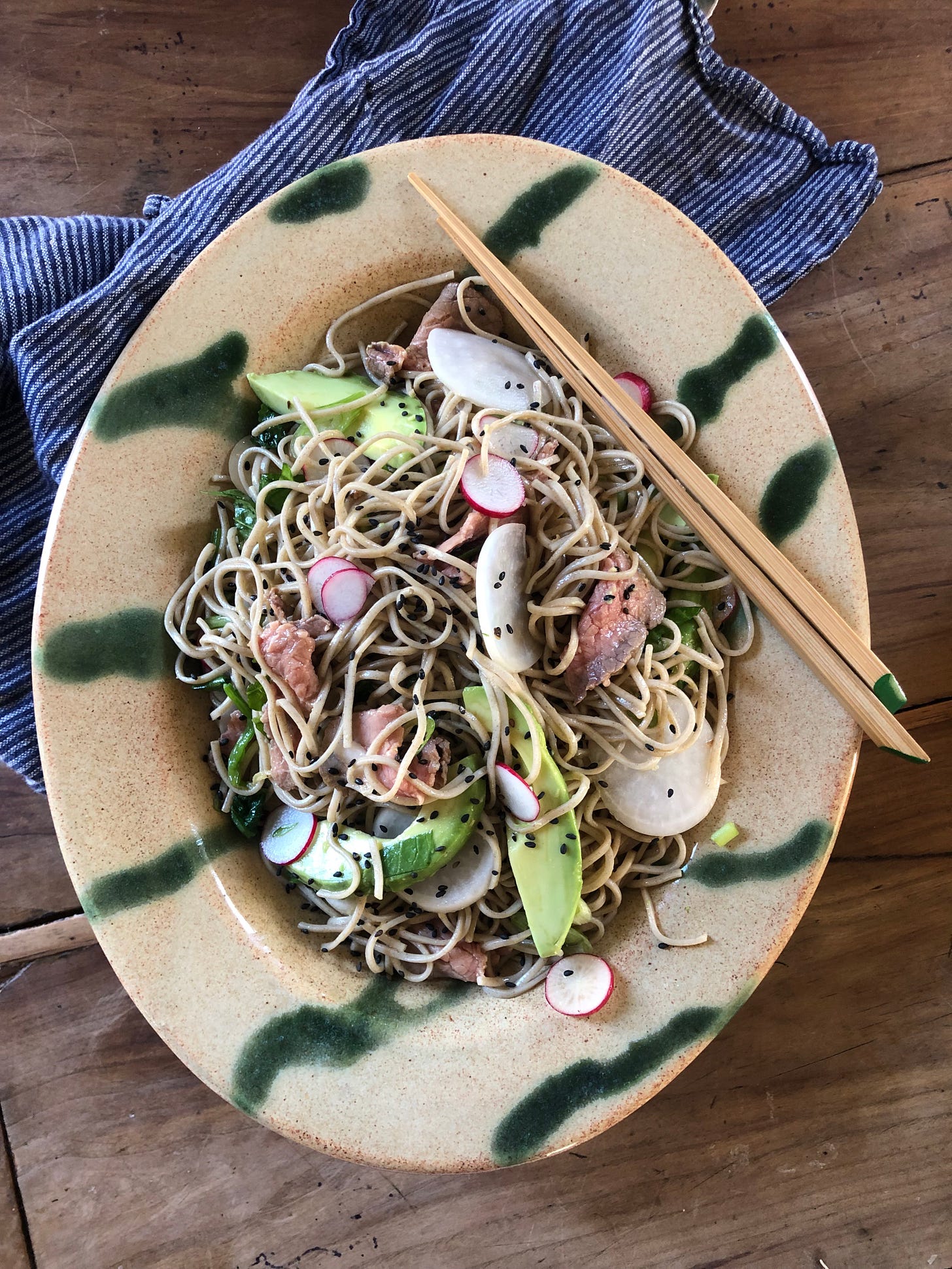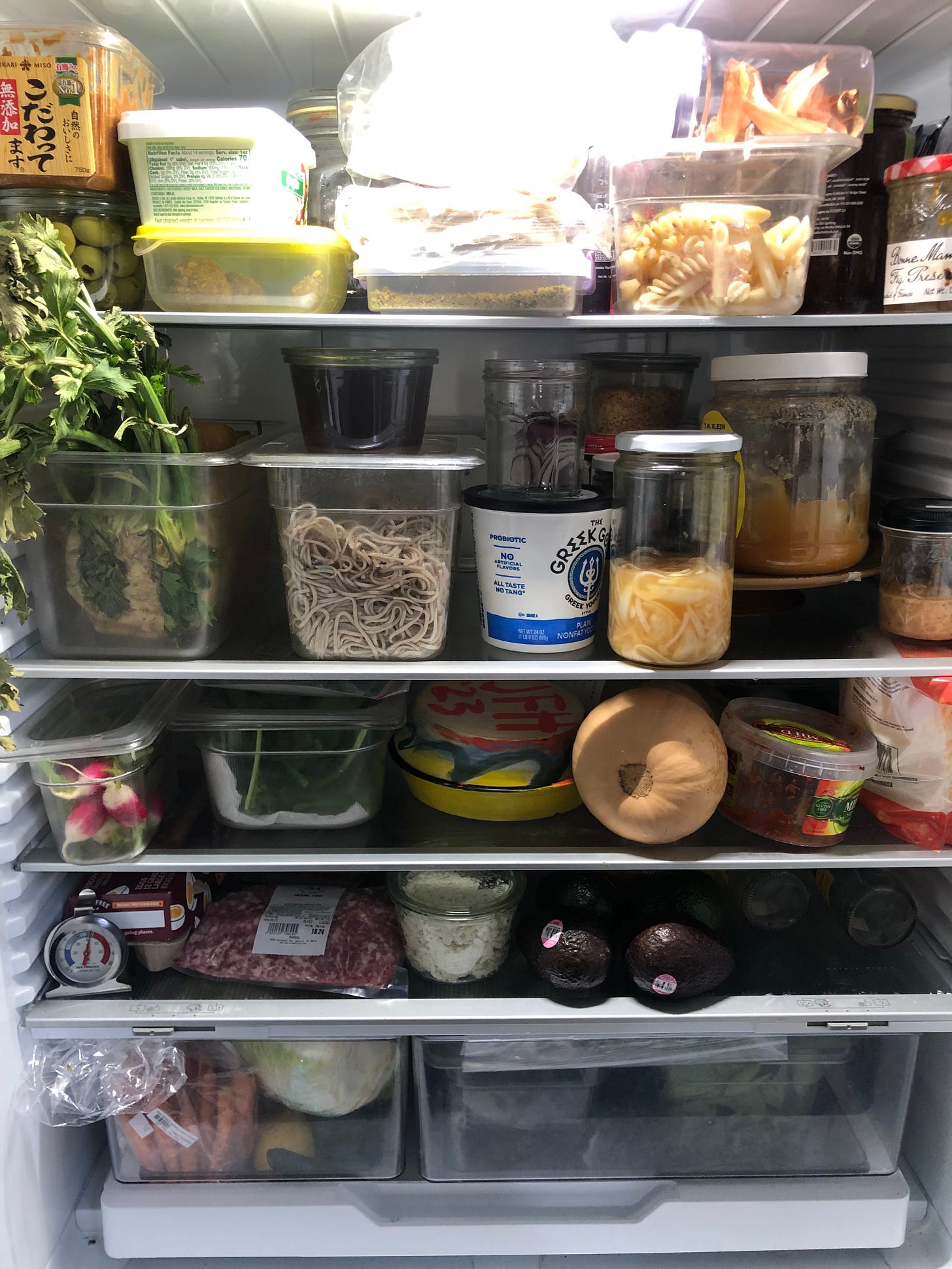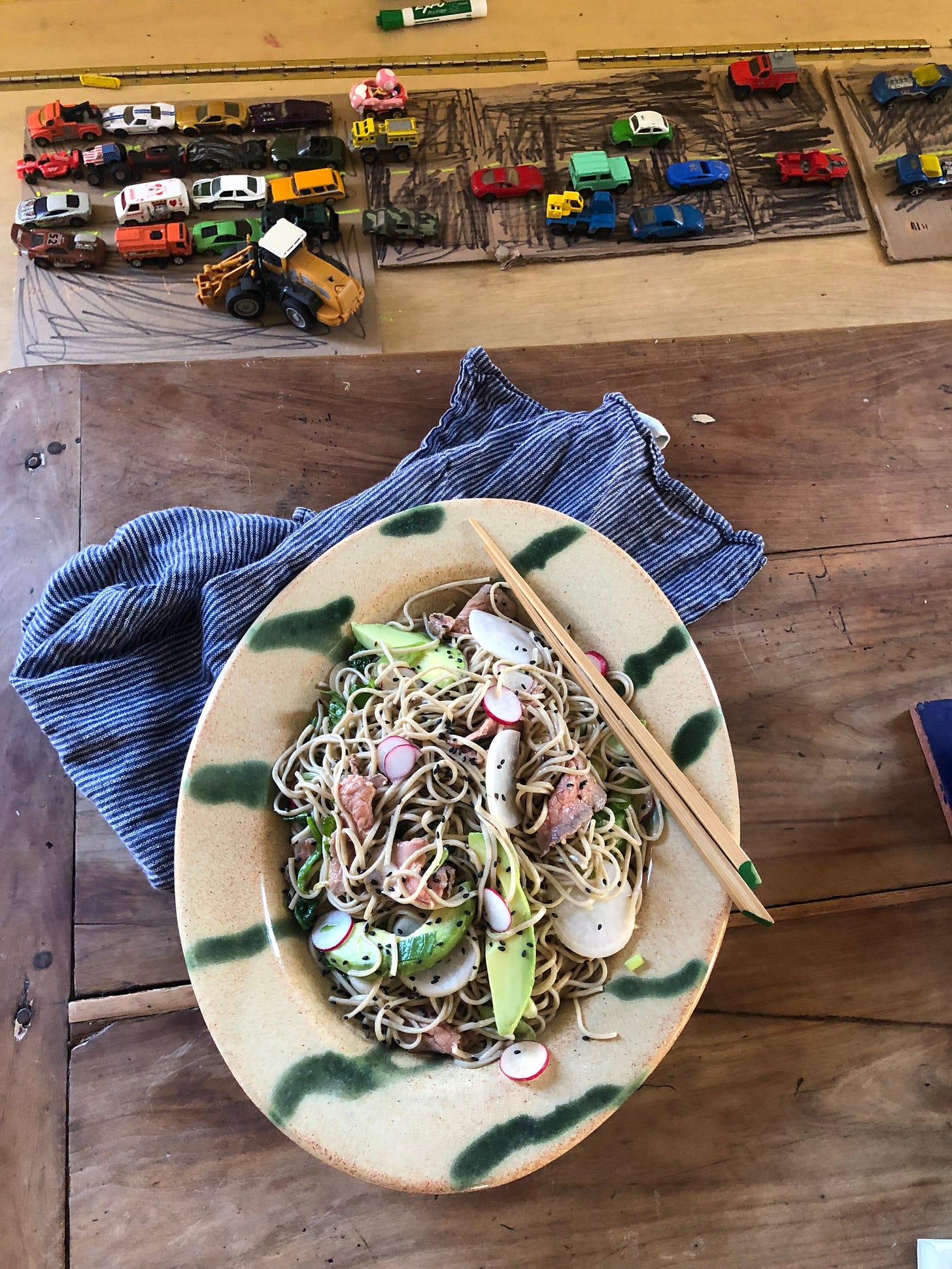I found a beautiful bunch of Hakurei turnips at the market this week, they are so sweet and delicious at this time of the year. Whenever I buy vegetables such as turnips or radishes with the greens attached I try to always use the greens as well. They are especially delicious after a quick plunge in boiling water to remover any possible prickly texture, then squeezed dry, chopped and dressed, as with the dressing below, or with just a very light sprinkle of sesame oil, salt and roasted sesame seeds.
When I come home from the market I try to make a habit of prepping and storing my vegetables properly straight away, it increases their shelf life considerably, as well as the chances of me actually using everything. Admittedly I’m not always great at actually doing this, but when I do I give myself an energetic high-five every time I open the fridge- it’s the little things! Turnip and radish greens have a particularly short shelf life, so I like to separate them from the root straight away and give everything a good wash- they can be really sandy- before storing them in a container lined with paper towel. They are generally best uses within a day or two, and can be cooked as I mentioned above or even just chopped up and thrown into a soup or pot of beans at the last minute, or tossed through some pasta for extra sustenance.
As for other vegetables and their storage, everything lasts better in a container, even if it is in the crisper, so I try to pair vegetables with things they might be cooked with to save space and avoid flavour contamination. For example, celery and leeks can be stored together, after I washed the dirt from the roots of the leeks. Pears and apples are stored together. Herbs and greens get stored in containers between layers of paper towel- nothing rots a nice lettuce leaf faster than being jammed into a damp plastic bag- it needs a little room to breathe and a towel to absorb excess moisture. If you are out of space or containers, at least wrap the greens in some towel inside the plastic bag. If you have lettuce (or cabbage or anything else) attached to a core, it will last longer if it stays attached. If you are saving half an avocado, keep the seeds intact and try to keep cores attached to onions if you are only using some of it. For obvious reasons onion is best stored in its own container once cut, or at least cut side down on a plate. Store potatoes out of the fridge- the cold will turn their starch to sugar- and make sure they are kept in the dark or they will turn green. Try to use them before they sprout, their nutritional value declines once they begin to grow. Sweet potatoes and squash don’t need to be refrigerated until after they are cut and cabbage can also be kept out of the fridge in a cool place for a little while provided it is not cut (though they will begin to dehydrate after some time). Onion, garlic and ginger should all be kept out of the fridge, though I realize that this may be different if you live in a particularly hot and humid environment. I realize much of this might be obvious, but sometimes it’s just good to write it down.

I found a lovely little eye of round roast at Marrow, the butcher in Detroit, the other day. I don’t think I have cooked one of these since my mum and I had a cafe when I was just out of high school. There we would rub it with mustard and black pepper and roast it (I as have done in the recipe below) and serve thin slices of it on a toasted sandwich with roasted peppers and mustard and horseradish cream. I have enough left over beef from this soba dish to make myself a nostalgic sandwich later in the week.
Whenever I make soba I always cook twice as much as I need, I also double the dressing, as both can be kept for 5 days in the fridge and eaten for lunch or a quick dinner later in the week. I used an eye of round roast here, a lean cut that is best cooked to rare or medium rare and then sliced as thinly as possible. I also make this same salad with tofu and have provided this variation below.
Soba noodles often come packaged conveniently pre-portioned in little bundles. Our family can eat an alarming number of soba, but generally 3 bundles or 1 pack should be enough for 4 serves when served with a substantial protein. When cooking soba you have to be very careful not to overcook them. I tend to hover over the pot as they cook, fishing noodles out of the pot to test if they are done as they cook. You want them to be just soft, not soggy but also no bite. The moment they are right, strain them immediately and either rinse them quickly with cold water or plunge them into an ice bath (I tend to do the former to save washing up).
Soba with Rare Beef and Greens
Keep reading with a 7-day free trial
Subscribe to Still Life With Lemon to keep reading this post and get 7 days of free access to the full post archives.






